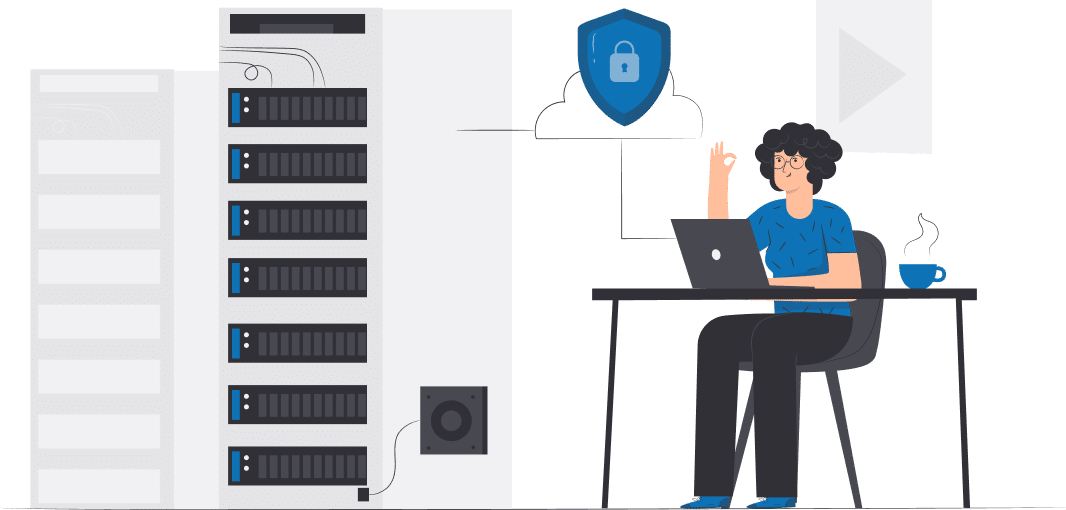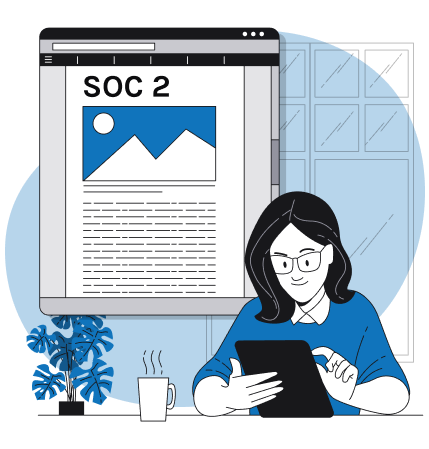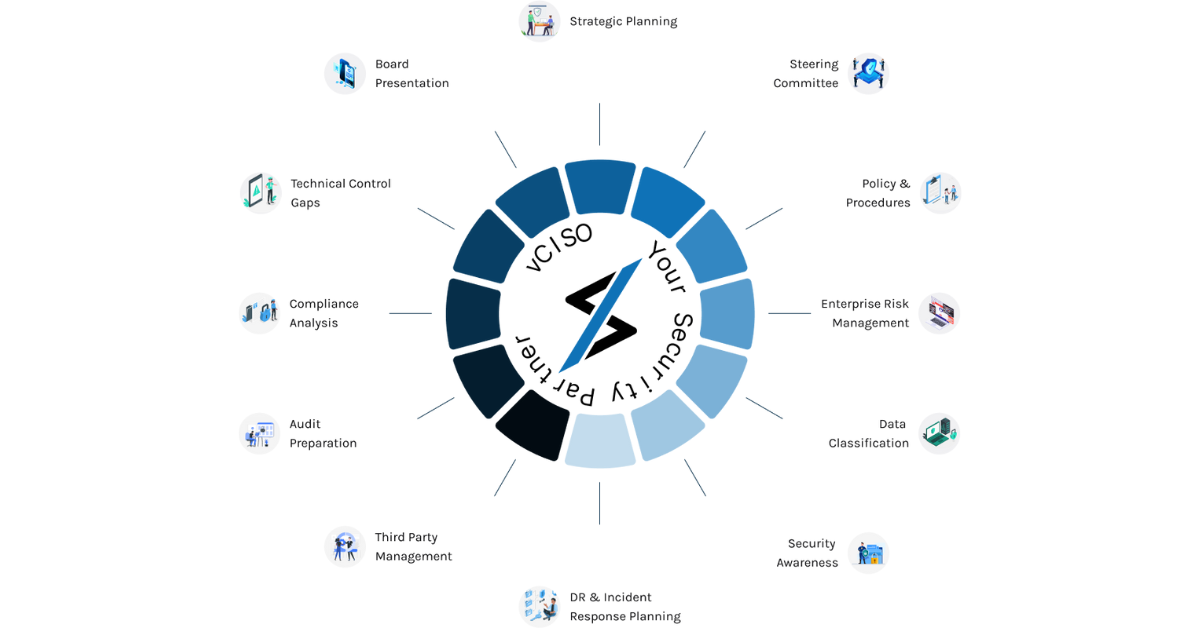
FedRAMP Compliance Made Easy: A Step-by-Step Guide for Cloud Service Providers
Achieving FedRAMP certification is essential for cloud service providers to build confidence and trust with federal agencies. However, what is
All businesses must prioritize information security, but it’s especially critical for those that outsource vital business operations to third-party vendors like software-as-a-service (SaaS and cloud-computing providers. Mishandled data can leave organizations vulnerable to severe threats, including data theft, extortion, and malware.

We strive to manage all areas of SOC2 compliance as your outsourced cybersecurity department so you don’t have to.
SOC 2 compliance is not required by law, nor is it driven by compliance with security HIPAA or other security regulations. External, third-party auditors perform this certification rather than government entities.

That doesn’t mean being deemed SOC 2-compliant is not beneficial, though. It still shows a commitment to data security and verifies that the processes you claim to follow are, in fact, being followed.
The Systems and Organizations Controls 2 certification dates back to the 1990s and comes from the Statement on Auditing Standards or SAS 70. This is an old audit used by certified public accountants to determine how effective an organization’s internal controls — including security — were.
When the American Institute of Certified Public Accountants or AICPA learned that some businesses were producing SAS 70 reports to show they were safe to work with, the organization replaced SAS 70 with something new: The Statement on Standards for Attestation Engagements or SSAE 16 report. Later, they renamed this report Systems and Organizations Controls (SOC) 1.


In 2009, the AICPA introduced SOC 2, a report that focused strictly on security and included the five Trust Services Principles.
Generally, SOC 2 is considered an extension of SOC 1. The two certifications share many elements in common but also have some distinct differences, including differences in scope, who uses them, and how they’re implemented.
Put simply, SOC 1 is designed to assess and report on an organization’s internal controls and their impact on customers’ financial statements, specifically. SOC 2, on the other hand, evaluates and reports on internal controls regarding the Trust Services Principles:





The scope of SOC 1 includes processing and protecting customer data and spans across business and IT processes. SOC 2’s scope includes any or all of the five Trust Services Principles (as well as any combination of them).


Executive teams and external auditors typically use SOC 1. The same is true of SOC 2, but it’s also used by sales teams, business partners, regulators, and prospective customers.
Imagine a company providing outsourced billing services to a hospital. The hospital might audit the billing provider’s security controls and receive a SOC 1 report detailing them.
Conversely, a SOC 2 report might apply in the case of a SaaS company that stores and protects customer data for an organization
Instead of taking the time for customers to inspect all aspects of the SaaS company’s security measures and systems, the company might give the customer a copy of its SOC 2 report, which includes details of all the controls implemented for data protection.

There are two types of audits involved in SOC 2 compliance. Third-party evaluators perform both of these audits, and it usually takes about six months for an organization to become fully compliant.
The SOC 2 Type 1 audit assesses your company’s security processes and their design at a specific point in time. The SOC 2 Type 2 audit, on the other hand, verifies the effectiveness of these processes and controls over a longer time span. You must complete a Type 1 audit before you can complete a Type 2 audit.
Some core differences between the two are explained in more detail below:

The SOC 2 Type 1 audit starts with the formation of a multidisciplinary team, the election of an executive sponsor, and the identification of an author who collaborates with team leads and translates each team’s business needs into specific policies.

This portion of the audit takes about two months. During this period, you’ll implement, test, and fine-tune policies, and when you think you’re ready, you’ll schedule a formal assessment. The assessment includes staff interviews, a walk-through of your office space, and a review of all documentation related to your security policies and protocols.

The author will reference the AICPA Trust Services Principles during this process and only select those that apply to the company’s services. Then, they’ll define the scope of the audit to write and refine policies more clearly.

Your SOC 2 Type 1 report will be generated after the auditor has given their approval.

The scope of a SOC 2 Type 2 report is more expansive and tests an organization’s systems over a more extended period of time (usually around six months).

In the SOC 2 Type 2 assessment, auditors will also conduct fieldwork and observe controls, select samples, and test processes for weeks or months at a time.

As is the case with the SOC Type 1 assessment, preparation for this evaluation includes drafting system descriptions, mapping controls, conducting research, and conducting a risk assessment for various areas.
SOC 2 compliance is relevant to service providers that store customer data in the cloud.
If your organization does this, whether you run a software-as-a-service company or any other type of cloud-based business, you can use a SOC 2 report to show your security controls and verify to potential customers that you have a plan in place to protect their data.


Put yourself in the shoes of a prospective customer. If they see that you, a potential vendor, have taken the time to fulfill all SOC 2 requirements, they will likely feel more confident that you know how to process users’ data correctly and ensure it stays private.
The reports produced during the Type 1 and Type 2 audit processes can help with vendor management, corporate governance, risk management, and regulatory oversight as well.

SOC reports can show your potential customers that you care about their data security and are committed to running an ethical and safe organization.

Faster sales cycles and increased credibility will, in turn, allow for greater long-term business success across the board.

If you can prove compliance, you can speed up the sales cycle by getting potential customers on your side and encouraging them to invest in your services sooner.
Attaining SOC 2 certification also requires you to adhere to the five Trust Services Principles:

Adherence to this principle shows the customer that the data is safe and protected from unauthorized parties.

Adherence to this principle ensures that all systems are complete, accurate, timely, and valid.

Adherence to this principle ensures personal information is collected, used, retained, and disposed of correctly and in accordance with your company’s privacy notices.

Adherence to this principle focuses on the security systems available to your team.

Adherence to this principle ensures that all confidential information is protected according to previous commitments and agreements.
You don’t necessarily have to adhere to all five of these principles, as they might not all apply to your organization. However, you must identify the ones that are relevant and ensure compliance before you begin the auditing process.


SOC 2 compliance can help you set your business apart from other organizations and show potential customers that you care so much about their privacy that you’re willing to go above and beyond to earn additional security-related certifications.
Use the information shared above as a guideline to help your team create a plan of action and ensure you meet all the benchmarks laid out by the NIST.
Are you ready to experience the benefits of SOC 2 certification? If so, Bluesteel Cybersecurity is here to help.
Learn more about our compliance preparation services today.

Achieving FedRAMP certification is essential for cloud service providers to build confidence and trust with federal agencies. However, what is

COLUMBIA, MD, UNITED STATES, June 12, 2024 /EINPresswire.com/ — BlueSteel Cybersecurity, a leading provider of comprehensive cybersecurity compliance solutions for Healthcare, Finance,

Table of Contents Understanding HIPAA and HITECH Ensuring HIPAA HITECH compliance certification is vital for healthcare organizations to protect patient
Reach us Monday through Friday
8am – 6pm